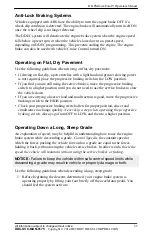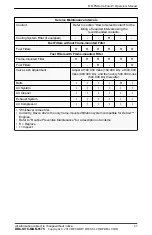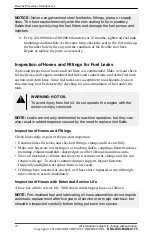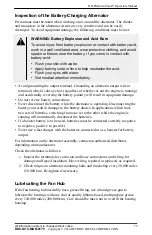
Checking for Coolant Leaks
Perform daily visual checks for cooling system leaks. Look for an accumulation of
coolant when the engine is running and when it is stopped.
NOTE:
Coolant leaks may be more apparent on a engine when it is cold.
WARNING: PERSONAL INJURY
To avoid injury before starting and running the engine, ensure the
vehicle is parked on a level surface, parking brake is set, and the
wheels are blocked.
Coolant Inhibitors
The inhibitors in antifreeze solutions must be replenished with an approved
corrosion inhibitor supplement when indicated by testing the coolant. Refer to
section "How to Select Coolant" for the listing of required intervals using the
recommended coolants for required test intervals, inhibitor levels, and approved
inhibitors.
NOTICE:
Coolant must be inhibited with the recommended Supplemental
Coolant Additives listed in this manual. Failure to check and maintain
Supplemental Coolant Additive levels at required concentrations will result
in severe damage (corrosion) to the engine cooling system and related
components.
The cooling system is protected by a Supplemental Coolant Additive element. In
addition, the engine can be equipped with a coolant filter/inhibitor system as an
installed option or as an after-sale item.
Coolant Drain Interval
A coolant system properly maintained and protected with supplemental coolant
inhibitors can be operated up to the intervals listed. At these intervals the coolant
must be drained and disposed of in an environmentally responsible manner
according to state and/or federal Environmental Protection Agency (EPA)
recommendations.
Inspection of the Radiator
Inspect the radiator as follows:
1. Inspect the exterior of the radiator core every 30,000 miles (50,000 km) or 12
months.
DD Platform EuroIV Operators Manual
All information subject to change without notice.
67
DDC-SVC-MAN-0175
Copyright © 2014 DETROIT DIESEL CORPORATION
















































